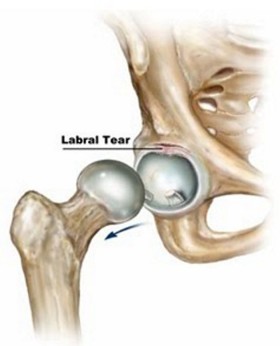
Hip Labral Tear
Almost 80% of labral tears have no direct cause but are a build up of repeated minor traumas during high impact sports, such as football or golf, or are attributed to wear and tear of the hip joint due to degeneration. Sudden major trauma to the hip joint can cause a labral tear but further injuries are usually sustained.
Symptoms are a locking, clicking or catching sensation deep within the hip joint and can be accompanied by sharp groin or anterior thigh pain. The pain may become worse with flexion of the hip. There may also be a feeling of giving way, stiffness and a decrease in the range of movement of the hip.
Diagnosis of this injury is particularly hard because x-rays, CT, MRI and ultrasound scans do not pick up this injury. Diagnosis is made with a MR arthrogram, a specialised MRI scan combined with an injection of dye into the hip joint will show a labral tear.
Initial treatment, if the symptoms are not too severe is rest followed by physiotherapy. A physiotherapist will give you exercises to maximise hip range of movement to increase strength and stability. Some people recover in a few weeks with conservative treatment. Analgesia and anti-inflammatory medication will help with the pain; take these on the advice of your G.P.
If conservative treatment is unsuccessful or the symptoms are severe, hip arthroscopy can be performed. It is becoming increasingly popular for the treatment of labral tears and can be performed as day surgery. During the procedure the tear is visualised and trimmed effectively removing the problem. After surgery, crutches may be used for 4 or 5 days, and once incisions have healed, physiotherapy will begin. A physiotherapist will help to mobilise the hip joint to increase range of movement and progress onto muscle strengthening exercises. A return to sport could take 2-3 months.
For more physiotherapy news click here.